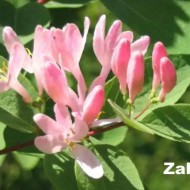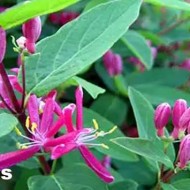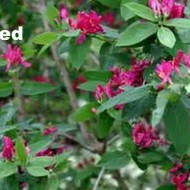Growing Tatar honeysuckle in the garden: useful tips from gardeners
Content
History of Tatar honeysuckle
The history of the origin of the ornamental shrub is not fully understood. It is reliably known that the main area of wild-growing culture was the forests of Siberia, the Urals and the Middle Volga region. The etymology of the name has several versions. There is an opinion that the plant got its name for its mass distribution in the territory of Tatarstan. According to the second assumption, Tatar honeysuckle as a cultivated species of wild-growing shrub was bred by breeders of Tatar plant growing farms.
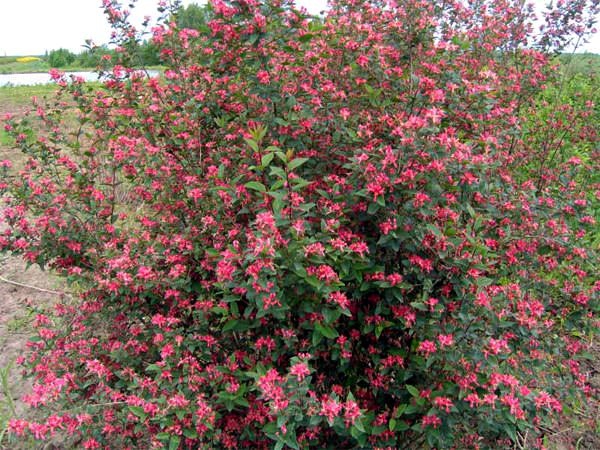
Video "Varieties of Honeysuckle"
This video shows various types and varieties of an ornamental shrub plant.
Botanical portrait of a plant
In nature, there are two types of honeysuckle: decorative and fruit. The fruits of the latter are edible. Tatar honeysuckle, in turn, belongs to the ornamental shrub species.
Bush shape
According to the botanical description, Tatar honeysuckle is a tall ornamental shrub. Plant height can vary from 2 to 4 m. The crown diameter depends on the varietal characteristics of the crop. So, the average width of the crown is 2 m. In this case, the shape of the bush is funnel-shaped. Long shoots hang down, giving the shrub a funnel-like or fountain-like appearance.
Branches of a yellow-brown hue are covered with "rags" of old bark. Many novice gardeners mistakenly think that the plant has been attacked by harmful insects or has become a victim of some kind of disease.
Deciduous cover
A characteristic feature of honeysuckle is abundant foliage. The shrub leaves are dark green in color with a slight bluish tinge. In this case, the shape of the leaf plates is egg-shaped. The length of the leaflet ranges from 3 to 6 cm.
Despite the fact that honeysuckle is an evergreen crop, the Tatar variety sheds foliage with the first frost.
Flowering and fruiting
The peak of the decorative effect of the shrub falls on the flowering period. The plant is covered with small flowers of white and pink shades. Inflorescences, the diameter of which does not exceed 1.5–2 cm, are formed in the axils of the leaf plates. The flowering period lasts 3-5 weeks.
The fruits have a beautiful carmine red color. A cursory glance at the bush gives the impression that it is covered with large glossy beads. Many are interested in whether bright fruits can be eaten.As it turned out, the berries of Tatar honeysuckle are dangerous to humans.
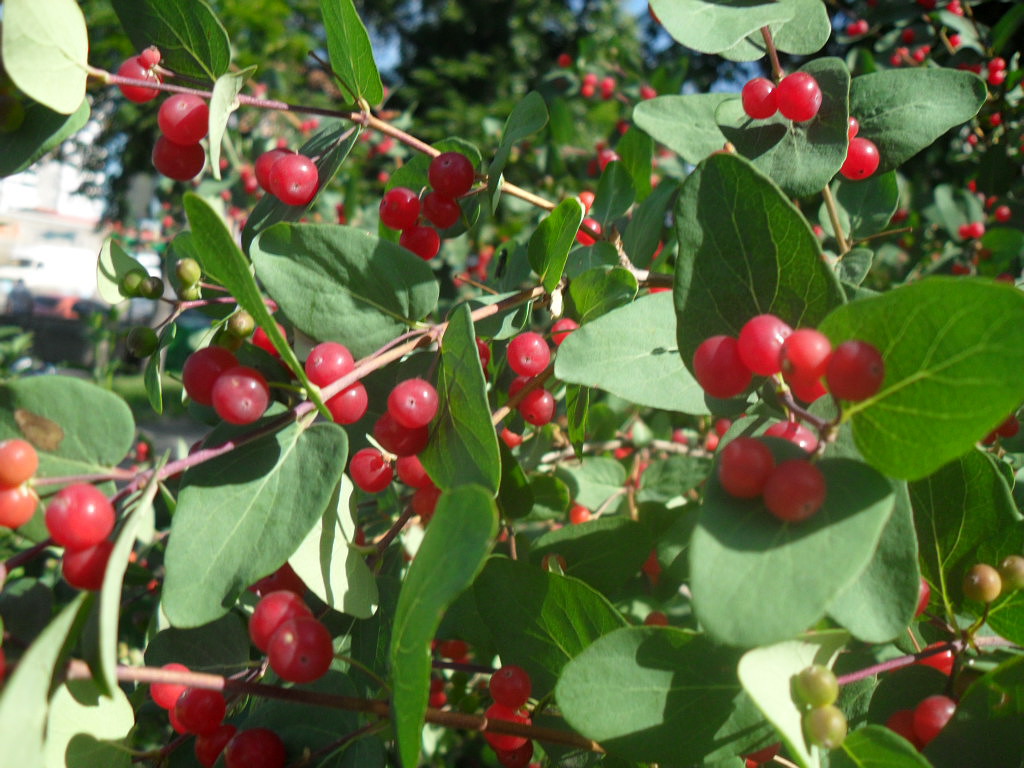
Popular varieties of Tatar honeysuckle
In nature, there are about two dozen varieties of this decorative culture. But only a few of them are widespread in horticulture.
Rosea
The Rosea variety has a pyramidal crown. Blooms in May. During this period, the bush is covered with large pink flowers. The fruit is orange-red in color.
Hack Red
The deep purple color of the petals is a characteristic feature of the Hack Red cultivar. Differs in a long flowering phase - from early May to mid-June. The red color of the fruit does not crumble throughout the growing season.
Arnold red
The Arnold Red variety is actively used for landscaping parks and squares in megacities. The plant is highly gas- and smoke-resistant. The flowers are characterized by a bright purple-pink color, for the fruits - a deep red.
Elegans
The shape of the leaves is ovoid, elongated, with wavy edges. The flower petals have a beautiful red color with white veins. The flowering period is in June, and the fruiting period is in July and August.
Zabelli
It stands out with an unusual color of the petals - maroon. The fruits have a regular round shape. The skin color is red.
Casanova
Variety Casanova is an unpretentious gardening culture. It has an interesting color of the petals: the outer surface is red, the inner one is milky-lilac.
- Zabelli
- Elegans
- Hack Red
- Rosea
Planting rules for seedlings
Once planted in the right place, the plant will annually delight with bright flowering and abundant fruiting. So, how to plant Tatar honeysuckle?
Choice of location, soil and lighting
The plant loves abundant sunlight. With a lack of sun, the inflorescences become smaller and lose the bright color of the petals. Also try to avoid close groundwater tables.
Tatar honeysuckle is unpretentious to soil composition. Ornamental culture can grow on loams, sandy loam and saline soils. The optimal environment is well-drained and fertile soil.
Purchase of seedlings
For planting, it is better to take two-year-old seedlings with 3-4 shoots. In this case, the root system of the plant must be well developed. Dried buds, signs of rot, cracks and other damage to the bark are signs of unhealthy planting material.

Landing features
Seedlings with an open root system are planted in autumn, with a closed one - throughout the growing season. The optimal dimensions of the planting pit are 40x40x40 cm. The recommended pitch between the holes is 1.5–3 m.
The bottom of the planting pit is laid out with broken brick, expanded clay or gravel. The height of the drainage should be about 5–7 cm. Then a layer of soil mixture is applied, consisting of turf, river sand and peat / humus. The ratio of the components is 3: 1: 1. You can add some wood ash, compost and superphosphate to the planting hole.
When planting a seedling, you need to ensure that the root collar remains above the ground. When the shrub is planted, the trunk circle is abundantly moistened and covered with a layer of mulch.
Helpful care tips
The next stage is caring for an ornamental shrub plant.
Watering, loosening and mulching
Young bushes are watered every 2-4 weeks, adults - 2-3 times per season. A bucket of water is poured under one bush. Watering frequency is determined by weather conditions. As soon as the top layer of the earth dries out, the soil needs to be loosened and mulched.
Mulch prevents the growth of weeds and protects the root system from insects and diseases.
Top dressing and fertilization
Top dressing of ornamental shrubs is carried out 3 times per season:
- Before the formation of kidneys - nitrogen-containing drugs.
- Before the flowering phase - complex mineral fertilizers.
- At the end of fruiting - wood ash.
Pruning and shaping the crown
Lack of formative pruning can cause abundant overgrowth of the shrub. All branches aged 5 years and older are subject to removal. To give the bush an interesting shape, the shoots are shortened into ⅔ parts.
Sanitary pruning is carried out every autumn. Weakened branches damaged by wind, insects or diseases must be completely removed. Places of cuts are treated with garden pitch.

Preparation for wintering
Honeysuckle is a frost-resistant ornamental crop. You do not need to cover the plant for the winter. The exception is young shrubs, which are covered with spruce branches or any non-woven covering material.
In the northern regions, where severe and snowy winters prevail, honeysuckle can be insulated with fallen leaves, hay, sawdust and dry river sand.
Pest and disease control
Unfortunately, honeysuckle attracts the attention of not only people, but also insects. Often on plants you can find leaf beetles, caterpillars, slugs, scale insects, spider mites and aphids. Insecticidal preparations "Aktara", "Fitoverm", "Aktellik" and "Confidor" help to fight parasites.
As for diseases, Tatar honeysuckle is affected by powdery mildew, gray rot, mosaic and various kinds of spotting. To protect the shrub, fungicides and copper-based preparations are used.
Reproduction of culture
Honeysuckle can be propagated by both seed and vegetative methods.
Sowing seeds
When propagated by seeds, the qualities of the mother variety are not preserved. The probability of obtaining a wild crop with low decorative qualities is very high. Therefore, the seed propagation method is rarely used in modern horticulture.
Cuttings
Harvesting of cuttings falls in May-June. The optimum cutting length is 20 cm. Each shoot should have several healthy buds. After cutting, the cuttings are immersed in the rooting solution. Roots appear after 12-15 days. The cuttings can now be planted in mini greenhouses.
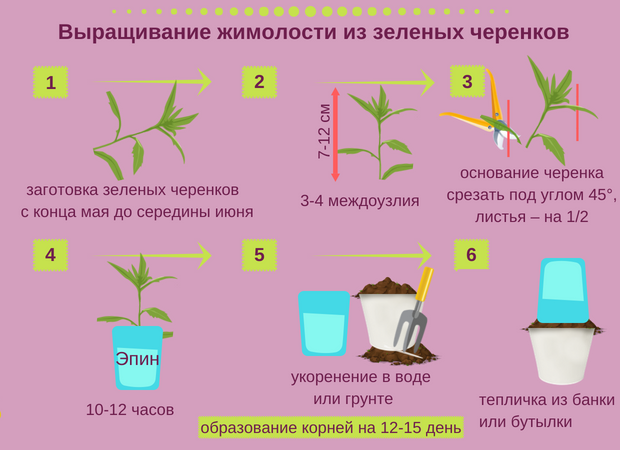
Division by layering
Reproduction by layering does not require much effort from the gardener. Shoots are bent to the surface of the ground and fixed with metal brackets. The place of future rooting is sprinkled with earth and sprinkled with Kornevin powder. When shoots appear and leaves are formed, the shoots can be separated from the mother bush.
The use of Tatar honeysuckle in landscape design
Tatar honeysuckle is actively used in the design of adjoining territories and landscaping of park areas, city squares, alleys and streets. Can be used in single and group plantings. It gets along well with other varieties of honeysuckle. Ornamental shrub looks interesting with coniferous and deciduous crops.
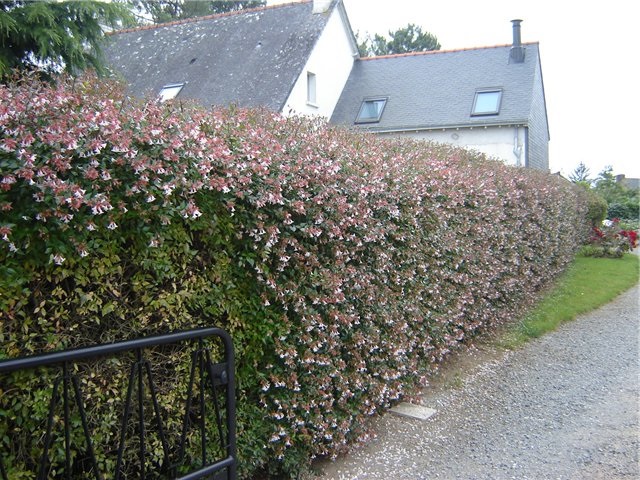
Due to its high decorative characteristics, Tatar honeysuckle will become a true decoration of a garden plot or park area. Unpretentious care is one of the virtues of this culture.

